A Guide on How to Decorate Winter Gardens
As the chilly embrace of winter sets in, transforming your garden into a cosy sanctuary becomes a delightful endeavour. Winter gardens offer a unique opportunity to infuse warmth and charm into outdoor spaces, creating inviting retreats that can be enjoyed even during the coldest months.

So, whether you're a seasoned gardener or a novice enthusiast, this guide will walk you through the essential steps to decorate your winter garden with style and comfort.
Embrace Seasonal Greenery
While winter may seem bleak, there's still plenty of beauty to be found in nature. Incorporate evergreen plants such as holly, boxwood, and conifers to provide structure and colour to winter gardens.
Think about adding winter-flowering plants such as violas, hellebores, and crocuses to bring bursts of brightness and joy to the garden. Place seasonal garlands on your yard entrances or outbuilding doors to greet guests with festive charm.
Create Cosy Seating Areas
Transform your winter gardens into a cosy oasis by incorporating comfortable seating areas where you can relax and unwind. Arrange weather-resistant furniture such as Adirondack chairs, benches, or outdoor sofas around a central focal point such as a fire pit or decorative fountain.
Layer plush cushions, throws, and blankets to provide warmth and comfort for chilly evenings spent outdoors. Don't forget to add accent pillows in seasonal colours and patterns to enhance the cosy ambience.
Illuminate with Soft Lighting
Extend the enjoyment of your winter gardens into the evening hours by incorporating soft lighting elements throughout the space. Hang string lights or lanterns from tree branches or pergolas to create a magical ambience.
Install pathway lights to guide guests safely through the garden and highlight key features such as sculptures or plantings. Consider placing candles or LED candles in hurricane lanterns or glass jars for a warm and inviting glow.
Decorate with Seasonal Accents
Add seasonal accents and decorations to your winter gardens to enhance their festive charm. Hang decorative ornaments, garlands, and bunting from tree branches or garden structures to create a whimsical atmosphere.
Place rustic wooden signs strategically throughout the garden with seasonal greetings or inspirational quotes. Incorporate natural elements such as pine cones, birch logs, and berries into your decor for a touch of rustic elegance.
Install Weatherproof Art
Elevate the visual appeal of your winter gardens by installing weatherproof art pieces that complement the natural surroundings. Choose sculptures, statues, or metalwork that can withstand the elements and add visual interest to the landscape.
Consider installing a focal point, such as a water feature or garden sculpture, to create a sense of drama and intrigue. Don't forget to rotate your outdoor art pieces periodically to keep the garden looking fresh and dynamic.
Integrate Functional Structures
Maximise the usability of your winter gardens by integrating functional structures such as pergolas, arbours, or trellises. These architectural elements not only add visual interest to the landscape but also provide support for climbing plants and vines.
Train fragrant climbers like jasmine or honeysuckle to grow over trellises and create natural privacy screens. Hang bird feeders, nesting boxes, and insect hotels from pergolas to attract wildlife and promote biodiversity.

Protect with Rugs
One often overlooked aspect of winter garden decor is the use of rugs to add warmth and comfort to outdoor seating areas. Opt for weather-resistant rugs made from durable materials such as polypropylene or synthetic fibres that can withstand exposure to moisture and harsh weather conditions.
Place rugs, like this Ecology Outdoor Grey Rug, strategically under seating arrangements or dining areas to define the space and provide insulation against cold surfaces. Choose rugs in natural colours or seasonal patterns to complement your winter garden decor scheme and tie the outdoor space together.
Enhance with Rug Layers
Layering rugs is a simple yet effective way to enhance the comfort and visual appeal of your winter garden seating areas. Start with a large outdoor rug, like this Nature Dark Grey Outdoor Rug, as the base layer to anchor the space and provide coverage for high-traffic areas.
Layer smaller accent rugs or runners on top to add texture, pattern, and visual interest. Mix and match rugs in complementary colours and patterns to create a cosy, inviting atmosphere that encourages outdoor relaxation and socialising.
Maintain and Enjoy
Finally, don't forget to maintain your winter gardens regularly to ensure they remain a beautiful and inviting space throughout the season. Remove fallen leaves, debris, and snow from pathways, seating areas, and garden beds to prevent slips and falls.
Prune dead or damaged branches from trees and shrubs to promote healthy growth and maintain a neat appearance. Take time to enjoy the fruits of your labour by hosting gatherings, sipping hot beverages, or simply soaking in the beauty of your winter garden sanctuary.
Wrapping Up
Decorating your winter garden is a wonderful opportunity to express your creativity and create a welcoming outdoor retreat that can be enjoyed year-round. By incorporating seasonal greenery, cosy seating areas, soft lighting, and decorative accents, you can transform your garden into a magical winter wonderland that delights the senses and warms the soul. With careful planning and attention to detail, you can create a winter garden oasis that provides joy, relaxation, and inspiration for seasons to come.
Transform Your Winter Garden with the Perfect Rug: Tips to Decorate Your Outdoor Space
Introduction to decorating winter gardens with rugs
In the chilly embrace of winter, our outdoor spaces often lie dormant, awaiting the return of spring's warmth. However, with a little creativity and the addition of a well-chosen rug, we can breathe new life into our winter gardens, transforming them into cozy sanctuaries that beckon us to linger and enjoy nature's beauty. As an avid gardener and outdoor enthusiast, I've discovered the transformative power of rugs in enhancing the ambiance and functionality of these spaces.
Decorating winter gardens with rugs is a delightful way to extend the living area beyond the confines of our homes, blurring the boundaries between indoors and outdoors. These versatile floor coverings not only add warmth and comfort underfoot but also serve as a canvas for expressing our personal style and creating a cohesive design aesthetic.
In this comprehensive guide, we'll explore the benefits of using rugs in outdoor spaces, offer tips for choosing the perfect rug for your winter garden, and provide practical advice on rug placement, materials, maintenance, and more. Whether you have a cozy patio, a spacious deck, or a charming gazebo, this article will equip you with the knowledge and inspiration to transform your winter garden into a truly inviting oasis.

Benefits of using rugs in outdoor spaces
Incorporating rugs into your winter garden offers a multitude of benefits that extend beyond mere aesthetic appeal. Here are some compelling reasons to consider adding these versatile floor coverings to your outdoor living spaces:
-
Warmth and Comfort: Rugs provide a cozy and inviting layer of warmth, making it more comfortable to spend time outdoors, even during the cooler months. The soft, insulating properties of a well-chosen rug can transform a chilly patio or deck into a welcoming retreat.
-
Visual Interest: A carefully selected rug can instantly add visual interest and depth to your outdoor space, acting as a focal point or complementing the existing design elements. With a vast array of colors, patterns, and textures to choose from, rugs offer endless possibilities for enhancing the overall aesthetic appeal.
-
Define Spaces: Rugs can be used to delineate distinct areas within your winter garden, creating a sense of cohesion and purpose. For instance, a rug can define a cozy seating area, a dining space, or a dedicated spot for outdoor activities.
-
Noise Reduction: The soft, plush fibers of rugs can help absorb sound, minimizing echoes and creating a more peaceful and serene atmosphere in your outdoor living spaces.
-
Versatility: Rugs are incredibly versatile, allowing you to easily change the look and feel of your winter garden by simply swapping out one rug for another. This flexibility makes it effortless to update your outdoor decor as seasons or personal preferences change.
With these benefits in mind, let's delve into the process of choosing the perfect rug for your winter garden and explore various tips and considerations to ensure a successful and visually stunning transformation.
Choosing the right rug for your winter garden
Selecting the ideal rug for your winter garden is a crucial step in achieving the desired aesthetic and functionality. Here are some key factors to consider when making your choice:
-
Size and Proportion: Measure the dimensions of your outdoor space and choose a rug that complements the proportions. A rug that is too small can look out of place, while an oversized one may overwhelm the area. As a general rule, leave at least 18 inches of floor space around the perimeter of the rug for a balanced look.
-
Material and Durability: Outdoor rugs must be able to withstand the elements, including sun exposure, moisture, and foot traffic. Look for rugs made from weather-resistant materials such as polypropylene, polyester, or PVC. These materials are designed to resist fading, mildew, and staining, ensuring long-lasting beauty and functionality.
-
Style and Color: Consider the overall aesthetic of your winter garden and choose a rug that complements or enhances the existing design elements. Bold patterns and vibrant colors can add a pop of energy, while neutral tones and subtle textures create a more understated and serene ambiance.
-
Maintenance and Care: Evaluate the maintenance requirements of different rug materials and choose one that aligns with your lifestyle and preferences. Some rugs may require more frequent cleaning or special care, while others are designed for low-maintenance upkeep.
-
Budget: Outdoor rugs come in a wide range of price points, from budget-friendly options to high-end designer pieces. Determine your budget and prioritize factors such as quality, durability, and longevity to ensure a wise investment.
By carefully considering these factors, you can find the perfect rug that not only enhances the visual appeal of your winter garden but also provides the practical benefits you desire.
Rug placement and arrangement tips
Once you've selected the ideal rug for your winter garden, the next step is to determine the optimal placement and arrangement. Here are some tips to help you create a cohesive and inviting outdoor space:
-
Define Seating Areas: Position the rug beneath outdoor furniture, such as chairs, sofas, or benches, to create a cozy and defined seating area. Ensure that the rug is large enough to accommodate all the furniture pieces and allow for ample walkway space around the perimeter.
-
Anchor Focal Points: Use a rug to anchor and highlight a focal point in your winter garden, such as a fire pit, water feature, or a striking piece of garden art. The rug will draw the eye towards the focal point and create a sense of balance and intentionality.
-
Layer Rugs: For larger outdoor spaces, consider layering multiple rugs to add depth and visual interest. A larger area rug can serve as the base, while smaller accent rugs can be strategically placed on top to create distinct zones or define pathways.
-
Align with Architectural Elements: When placing a rug on a patio or deck, align it with the architectural elements of your home or outdoor structure. This creates a sense of cohesion and intentionality, making the rug feel like an integral part of the design rather than an afterthought.
-
Consider Traffic Flow: Ensure that the rug placement does not obstruct natural traffic patterns or create tripping hazards. Leave ample walkway space around the perimeter of the rug and consider the flow of movement within your winter garden.
By following these rug placement and arrangement tips, you can create a harmonious and inviting outdoor space that seamlessly integrates the rug into the overall design aesthetic.
Rug materials suitable for outdoor use
When it comes to outdoor rugs, selecting the right material is crucial for ensuring durability, longevity, and easy maintenance. Here are some popular and suitable rug materials for outdoor use:
-
Polypropylene: Polypropylene is a synthetic material that is highly resistant to moisture, mildew, and fading, making it an excellent choice for outdoor rugs. These rugs are lightweight, easy to clean, and often budget-friendly, making them a practical option for winter gardens.
-
Polyester: Similar to polypropylene, polyester rugs are also synthetic and offer excellent weather resistance. They are known for their vibrant colors and ability to withstand heavy foot traffic, making them a durable choice for high-traffic outdoor areas.
-
PVC (Polyvinyl Chloride): PVC rugs are made from a synthetic plastic material that is waterproof, UV-resistant, and easy to clean. These rugs are often low-maintenance and can be hosed down for quick cleaning, making them a convenient option for outdoor spaces.
-
Outdoor-Safe Wool: While wool is a natural fiber, there are outdoor-safe wool rugs that are treated with special coatings or finishes to enhance their resistance to moisture, fading, and mildew. These rugs offer a luxurious feel and can add warmth and texture to your winter garden.
-
Sisal and Jute: These natural fibers are known for their durability and resistance to moisture, making them suitable for outdoor use. However, they may require more frequent cleaning and may not be as resistant to fading as synthetic materials.
-
Recycled Plastic: Eco-conscious consumers may appreciate rugs made from recycled plastic materials, which offer a sustainable and environmentally friendly option for outdoor spaces. These rugs are often durable, weather-resistant, and easy to maintain.
When choosing the material for your outdoor rug, consider factors such as durability, ease of maintenance, and resistance to the elements. Additionally, evaluate the specific needs and conditions of your winter garden to ensure the rug material aligns with your preferences and expectations.
Maintenance and care for outdoor rugs
Proper maintenance and care are essential for ensuring the longevity and pristine appearance of your outdoor rugs. Here are some tips to help you keep your winter garden rugs looking their best:
-
Regular Cleaning: Outdoor rugs are exposed to dirt, debris, and other elements, so regular cleaning is necessary. Depending on the material, you can use a garden hose, a mild detergent solution, or a specialized outdoor rug cleaner to remove dirt and grime.
-
Spot Cleaning: When spills or stains occur, act quickly to prevent them from setting in. Use a mild detergent or a specialized spot cleaner and blot the affected area gently. Avoid rubbing, as this can spread the stain or damage the rug fibers.
-
Rotating and Flipping: To promote even wear and prevent fading in high-traffic areas, rotate or flip your outdoor rug periodically. This will help distribute the exposure to sunlight and foot traffic, ensuring a more consistent appearance over time.
-
Proper Storage: During the harshest winter months or when not in use, consider storing your outdoor rugs in a dry, well-ventilated area. This will protect them from excessive moisture, mildew, and potential damage from freezing temperatures.
-
Professional Cleaning: For a deep and thorough cleaning, consider hiring professional rug cleaning services periodically. They have specialized equipment and techniques to remove stubborn stains, revive the rug's colors, and extend its lifespan.
-
UV Protection: Prolonged exposure to direct sunlight can cause fading and damage to outdoor rugs. Consider using a UV-resistant rug or applying a UV-protective spray or treatment to help preserve the rug's colors and integrity.
By following these maintenance and care tips, you can ensure that your outdoor rugs remain vibrant, clean, and in excellent condition, enhancing the beauty and functionality of your winter garden for years to come.
Enhancing the ambiance with rug colors and patterns
Rugs are not only functional additions to your winter garden but also powerful design elements that can significantly impact the overall ambiance and mood of the space. By carefully selecting the right colors and patterns, you can create a desired atmosphere and evoke specific emotions.
-
Warm and Cozy: For a cozy and inviting feel, consider rugs with warm hues such as rich reds, earthy browns, or golden yellows. These colors can create a sense of warmth and comfort, making your winter garden feel like a welcoming retreat.
-
Serene and Calming: If you're aiming for a serene and tranquil atmosphere, opt for cool tones like blues, greens, or soft grays. These colors can have a soothing effect and promote a sense of relaxation, perfect for creating a peaceful oasis in your winter garden.
-
Bold and Energetic: For a vibrant and energetic vibe, embrace bold patterns and vivid colors like bright oranges, fuchsias, or turquoises. These eye-catching rugs can add a playful and lively touch to your outdoor space, making it a focal point for gatherings and celebrations.
-
Natural and Earthy: To create a harmonious connection with nature, consider rugs with earthy tones and organic patterns inspired by the outdoors. Shades of greens, browns, and tans, combined with textures like jute or sisal, can blend seamlessly with your winter garden's natural surroundings.
-
Transitional and Versatile: If you prefer a more versatile and adaptable style, opt for rugs with neutral color palettes and classic patterns. These rugs can easily complement various design styles and allow you to switch up the decor elements around them without clashing.
Remember, the colors and patterns you choose for your outdoor rug should align with your personal preferences and the overall aesthetic you wish to achieve in your winter garden. Don't be afraid to experiment and mix and match different elements to create a truly unique and personalized space that reflects your style and personality.

Decorating ideas for different types of winter gardens
Winter gardens come in various shapes, sizes, and styles, each with its own unique character and design considerations. Here are some decorating ideas tailored to different types of winter gardens:
-
Cozy Patios and Decks:
- Create a warm and inviting seating area by arranging comfortable outdoor furniture on a plush, weather-resistant rug.
- Incorporate outdoor heating elements, such as a fire pit or patio heater, to extend the use of your space during cooler evenings.
- Add cozy accents like throw blankets, cushions, and outdoor lanterns to enhance the ambiance.
-
Enclosed Sunrooms or Solariums:
- Choose rugs with vibrant colors and patterns to add visual interest and warmth to the space.
- Incorporate indoor-outdoor furniture pieces that can withstand occasional exposure to the elements.
- Add lush greenery and potted plants to bring the outdoors in and create a seamless transition between the indoor and outdoor spaces.
-
Covered Gazebos or Pergolas:
- Use weather-resistant outdoor rugs to define the seating area and create a cozy retreat.
- Hang outdoor curtains or sheer panels to provide privacy and filter natural light.
- Incorporate string lights or lanterns to create a warm and inviting glow in the evenings.
-
Open-Air Gardens:
- Choose rugs with natural materials like sisal or jute to complement the organic surroundings.
- Create distinct zones for seating, dining, or relaxation by strategically placing rugs in different areas.
- Incorporate garden art, water features, or outdoor sculptures to add visual interest and focal points.
-
Rooftop Terraces:
- Select low-pile, easy-to-clean rugs that can withstand foot traffic and outdoor elements.
- Incorporate weather-resistant outdoor furniture and accessories to create a comfortable and stylish lounge area.
- Add potted plants, trellises, or vertical gardens to create a lush and inviting atmosphere.
Remember, the key to creating a beautiful and functional winter garden is to harmonize the various design elements, including the rug, furniture, lighting, and decor accents. Don't be afraid to experiment and let your personal style shine through, creating a space that truly reflects your unique taste and preferences.
DIY rug cleaning tips for outdoor spaces
While professional rug cleaning services can be a convenient option, there are also several DIY methods you can employ to keep your outdoor rugs looking fresh and vibrant. Here are some easy and effective DIY rug cleaning tips for outdoor spaces:
-
Shake and Vacuum: Start by giving your rug a thorough shake to remove any loose dirt, debris, or leaves. Follow up by vacuuming the rug thoroughly, paying special attention to high-traffic areas and corners.
-
Spot Cleaning: For stubborn stains or spills, act quickly and blot the area with a clean, absorbent cloth or paper towels. Mix a solution of mild detergent and warm water, and gently scrub the affected area using a soft-bristled brush. Rinse thoroughly with clean water and blot dry.
-
Baking Soda and Vinegar: For a natural and effective cleaning solution, sprinkle baking soda liberally over the rug and let it sit for at least 15 minutes. Then, mix equal parts white vinegar and warm water in a spray bottle and lightly mist the rug. The combination of baking soda and vinegar will create a gentle foaming action that helps lift dirt and odors. Let it sit for a few minutes, then rinse thoroughly with clean water and allow the rug to air dry.
-
Enzyme Cleaners: For tough organic stains like pet accidents or food spills, consider using an enzyme-based cleaner specifically formulated for outdoor rugs. These cleaners contain natural enzymes that break down and remove stubborn stains effectively.
-
Pressure Washing: For a deeper clean, you can pressure wash your outdoor rugs using a low-pressure setting. Be sure to follow the manufacturer's instructions and test a small, inconspicuous area first to ensure the rug can withstand the pressure without damage.
-
Sunlight and Fresh Air: After cleaning, allow your outdoor rug to dry completely in direct sunlight and fresh air. The UV rays from the sun can help kill any remaining bacteria or mildew, while the fresh air helps dissipate any lingering odors.
Remember, prevention is key to maintaining the longevity and pristine appearance of your outdoor rugs. Regularly sweep or vacuum them to remove loose dirt and debris, and promptly address any spills or stains. By incorporating these DIY cleaning methods into your routine, you can keep your winter garden rugs looking their best, ensuring a welcoming and inviting outdoor space for years to come.
Conclusion: Transforming your winter garden with the perfect rug
As we've explored throughout this comprehensive guide, incorporating the perfect rug into your winter garden can truly elevate the space, transforming it into a cozy and inviting oasis. By carefully considering factors such as material, size, color, and placement, you can create a harmonious and visually stunning outdoor area that reflects your personal style and preferences.
Whether you're seeking to define a cozy seating area, anchor a focal point, or simply add warmth and texture to your winter garden, the right rug can work wonders. With the proper maintenance and care, your outdoor rug will not only enhance the aesthetic appeal but also withstand the elements, ensuring long-lasting beauty and functionality.
So, embrace the transformative power of rugs and let your creativity shine. Experiment with different colors, patterns, and textures to create a truly unique and personalized space that seamlessly blends indoor and outdoor living. Your winter garden awaits, ready to be transformed into a cherished retreat where you can escape, relax, and bask in the beauty of nature, even during the cooler months.
How to Decorate Winter Gardens Easy: Simple Tips for Seasonal Charm
Transform your winter garden into a cosy retreat with these easy decorating ideas. Incorporate warm lighting using string lights or lanterns to create a magical ambiance during dark winter evenings. Add colourful winter plants like hellebores, winter pansies, and cyclamen for pops of vibrant hues. Use evergreen garlands and wreaths to bring a festive touch to fences and garden structures. Introduce texture with ornamental grasses and bark, which look stunning when frosted. Don't forget to provide shelter for wildlife with bird feeders and houses, adding both decoration and ecological value to your winter garden.
Small Winter Garden Ideas: Maximising Limited Space in Colder Months
Even with limited space, you can create a charming winter garden. Utilise vertical space with wall-mounted planters or trellises for winter-flowering clematis. Opt for compact evergreen shrubs like box or holly to maintain structure and greenness. Incorporate container gardening with frost-resistant pots filled with winter-blooming plants and ornamental cabbages. Use reflective surfaces like mirrors or metallic ornaments to amplify light and create the illusion of more space. Install a small fire pit or chiminea for warmth and ambiance, making your small winter garden an inviting outdoor room.
Indoor Winter Garden Ideas: Bringing Nature Inside During Cold Weather
Create a lush indoor winter garden to enjoy nature year-round. Choose houseplants that thrive in lower light conditions, such as peace lilies, snake plants, and ZZ plants. Set up a terrarium with miniature ferns and mosses for a low-maintenance indoor garden feature. Utilise windowsills for herb gardens, providing fresh flavours for winter cooking. Incorporate air-purifying plants like spider plants and aloe vera to improve indoor air quality. Don't forget to add ambient lighting with grow lights or decorative lamps to create a cosy atmosphere and support plant growth during shorter winter days.
Winter Garden Ideas UK: British-Inspired Seasonal Outdoor Spaces
Embrace the British winter with these garden ideas tailored for the UK climate. Plant winter-flowering shrubs like witch hazel and mahonia for colour and fragrance. Create structure with topiary and well-placed evergreens to maintain interest when deciduous plants are bare. Install raised beds for winter vegetables, protecting them with cloches or cold frames. Incorporate water features that can withstand freezing temperatures, adding movement and sound to the winter garden. Don't forget to provide shelter and food for local wildlife, encouraging robins and other winter birds to visit your garden.

Winter Vegetable Garden Ideas: Growing Fresh Produce in Colder Months
Maintain a productive garden even in winter with these vegetable growing ideas. Focus on cold-hardy crops like kale, Brussels sprouts, and winter lettuce varieties. Use polytunnels or greenhouses to extend the growing season for less hardy vegetables. Implement crop rotation to maintain soil health and reduce pest problems. Mulch heavily around plants to protect roots from frost and retain soil moisture. Consider growing microgreens indoors for a constant supply of fresh, nutrient-rich greens throughout the winter months.
Winter Garden Balcony Ideas: Cosy Outdoor Spaces for Compact Living
Transform your balcony into a winter haven with these creative ideas. Use frost-resistant containers filled with winter-flowering plants and structural evergreens. Install a retractable awning or canopy to provide shelter from rain and snow. Add warmth with outdoor heating options like electric patio heaters or blankets. Create a vertical garden using wall-mounted planters to maximise limited space. Incorporate winter-friendly furniture with weather-resistant materials and cosy cushions. Don't forget to add soft lighting with battery-operated candles or string lights for a magical winter atmosphere.
People Also Asked
How to make a beautiful winter garden?
Create a beautiful winter garden by incorporating evergreen plants, colorful berries, and interesting bark textures. Add winter-blooming flowers like hellebores and use decorative structures such as trellises or sculptures for visual interest.
What is best in a winter garden?
The best elements for a winter garden include evergreen shrubs, ornamental grasses, and plants with vibrant winter berries. Consider adding winter-flowering plants like witch hazel and structural elements like archways or bird feeders.
How to create a winter garden in the UK?
To create a winter garden in the UK, focus on cold-hardy plants like holly, ivy, and snowdrops. Incorporate sheltered seating areas, use raised beds for better drainage, and add winter-scented plants like winter honeysuckle.
How do you plan a winter garden layout?
Plan a winter garden layout by identifying sunny spots for winter-blooming plants, creating windbreaks with evergreen hedges, and designing clear pathways for easy access. Include focal points like sculptures or water features visible from indoors.
What consists of a winter garden?
A winter garden typically consists of evergreen plants, winter-flowering species, plants with colorful stems or bark, and structural elements like pergolas or arbors. Include winter berries, ornamental grasses, and frost-resistant containers.
What is the best orientation for a winter garden?
The best orientation for a winter garden is south-facing to maximize sunlight exposure during short winter days. Ensure protection from harsh winds and create microclimates for more delicate plants.
What is a winter garden balcony?
A winter garden balcony is an enclosed or semi-enclosed balcony space designed to enjoy greenery during colder months. It features cold-hardy plants, insulation, and often heating elements to create a comfortable year-round outdoor living area.
How do you take care of a winter garden?
Take care of a winter garden by protecting plants from frost, maintaining proper drainage, and pruning dead or damaged growth. Water sparingly but consistently, and add mulch to insulate plant roots from extreme temperature fluctuations.
How do I make my garden cozy?
Make your garden cozy by adding comfortable seating, outdoor lighting, and heat sources like fire pits. Create intimate spaces with trellises or screens, and incorporate soft textures through cushions and throws.
How do you use a winter garden?
Use a winter garden for year-round enjoyment by creating sheltered seating areas, growing winter vegetables, and attracting wildlife with bird feeders and water sources. It's also ideal for winter photography and meditation.
How do you clean a winter garden?
Clean a winter garden by removing fallen leaves and debris, pruning dead growth, and washing glass structures if present. Sanitize tools to prevent disease spread, and clean out bird feeders regularly.
How can I make my backyard beautiful?
Make your backyard beautiful by creating defined spaces for different activities, adding diverse plant textures and colors, and incorporating water features or garden art. Use lighting to highlight key features and create ambiance.
What is the best garden in the winter?
The best winter garden combines evergreen structure, winter-blooming plants, and interesting textures. Include plants like hellebores, winter jasmine, and red-twig dogwood for color and interest throughout the cold months.
When should I start my winter garden?
Start planning your winter garden in late summer or early fall. Plant most winter-hardy perennials and shrubs in autumn to establish roots before frost. Some winter vegetables can be planted in late summer for winter harvest.
How to decorate a garden for the winter?
Decorate a winter garden with festive lighting, colorful containers, and winter-themed ornaments. Use evergreen garlands, add brightly colored berries, and incorporate reflective elements like mirrors or metallic decorations.
What vegetables go in winter garden?
Winter garden vegetables include kale, Brussels sprouts, carrots, leeks, and winter lettuce. Garlic and broad beans can also be planted in autumn for spring harvest.
What flower grows best in winter?
Flowers that grow best in winter include pansies, cyclamen, hellebores, winter aconites, and snowdrops. These hardy blooms provide color and life to the winter garden.
How to make a winter garden?
Make a winter garden by selecting cold-hardy plants, creating sheltered areas, and focusing on structural elements. Incorporate winter-interest plants, add outdoor lighting, and create cozy seating areas for year-round enjoyment.
Can carrots grow in winter?
Yes, carrots can grow in winter, especially cold-hardy varieties. Plant them in late summer or early fall for winter harvest, and use row covers or cold frames for extra protection in harsh climates.
What are the winter fruits?
Winter fruits include citrus (oranges, lemons, grapefruits), pomegranates, persimmons, kiwis, and certain apple varieties. Many of these can be grown in protected areas or greenhouses in colder climates.
What plants can I put in my pots for winter?
For winter pots, choose evergreen shrubs like boxwood or holly, winter-flowering pansies, ornamental cabbages, and hardy herbs like rosemary. Add colorful stems like dogwood for additional interest.
How do you make a garden cozy?
Make a garden cozy by adding soft lighting, comfortable seating with plush cushions, and heat sources like patio heaters or fire pits. Create intimate spaces using plants or screens, and add textural elements like throws and rugs.
How do you describe a winter garden?
Describe a winter garden as a serene landscape showcasing the subtle beauty of the cold season. Highlight its structural elements, frosty textures, muted colors, and the quiet charm of dormant plants contrasted with evergreen backdrops and winter blooms.
What is the best way to cover your garden for winter?
The best way to cover your garden for winter is by using a thick layer of organic mulch. Apply 2-3 inches of straw, leaves, or bark chips around plants to insulate roots and soil. For more delicate plants, consider using frost cloth or burlap wraps to protect them from harsh winds and freezing temperatures. These methods help retain soil moisture and protect plant roots from extreme cold.
What are some winter decorations?
Winter decorations create a cozy and festive atmosphere. Incorporate warm, twinkling lights to combat the early darkness. Use natural elements like pinecones, bare branches, and evergreen garlands for a rustic touch. Add plush textures with faux fur throws and velvet pillows. Create a welcoming entrance with a winter wreath and lanterns. Don't forget scented candles with winter fragrances to engage all senses.
What is the best plant to plant in winter?
The best plants to plant in winter are typically hardy vegetables and perennials. Consider planting winter pansies for a pop of color, or hellebores for elegant blooms. For edibles, try garlic, which benefits from a cold period, or winter lettuce varieties. These plants can withstand colder temperatures and provide interest or harvests during the dormant season.
Should I cover my soil for the winter?
Yes, covering your soil for winter is highly beneficial. Use a layer of organic mulch or plant cover crops to protect and enrich your soil. This practice helps prevent erosion, suppress weed growth, and maintain soil structure. It also provides habitat for beneficial insects and microorganisms. Come spring, your soil will be in better condition for planting.
What plants need to be wrapped for winter?
Plants that need winter wrapping are typically non-native or borderline hardy species. Wrap young trees, especially those with thin bark, to prevent frost cracks. Evergreen shrubs like boxwood benefit from burlap wrapping to prevent winter burn. Potted plants should be wrapped or moved to a sheltered location. Roses, particularly hybrid teas, often need protection in colder regions.
What is the best garden winter ground cover?
The best garden winter ground cover depends on your specific needs, but evergreen perennials are excellent choices. Consider creeping thyme for a low-growing, fragrant option, or winter-flowering heather for color. Ornamental grasses provide texture and movement. For a practical approach, use straw or leaf mulch as an effective and natural ground cover that also enriches the soil.
How do you decorate in January after Christmas?
Post-Christmas January decor should focus on winter coziness rather than holiday themes. Embrace a clean, minimalist look by removing Christmas-specific items. Keep neutral-colored decorations like white lights or pinecones. Introduce soft textures with chunky knit blankets and plush pillows. Bring in natural elements like bare branches in vases or bowls of citrus fruits for a fresh feel.
Is it OK to decorate in winter?
Absolutely! Winter decorating is not only okay but highly encouraged to combat the season's gloom. Focus on creating a warm, inviting atmosphere with soft lighting and cozy textures. Use a palette inspired by nature – think whites, greys, and deep greens. Winter decorating can boost mood and make your home a comfortable retreat during the colder months.
How to decorate between winter and spring?
Transitioning decor from winter to spring involves gradually introducing lighter elements. Start by adding pops of color with fresh flowers or pastel accessories. Replace heavy winter textiles with lighter fabrics in brighter hues. Incorporate nature-inspired elements like bird motifs or floral patterns. Keep some cozy elements for lingering cold days while slowly brightening your space to welcome spring.
Do carrots grow in winter?
Carrots can indeed grow in winter, especially in milder climates. They are cold-hardy vegetables that can withstand light frosts. In fact, cold temperatures can make carrots sweeter. For best results, plant them in late summer or early fall for a winter harvest. In colder regions, use row covers or cold frames to extend the growing season and protect the carrots from extreme cold.
What are winter plants used as decoration?
Winter plants add life and color to seasonal decor. Holly with its bright berries is a classic choice. Evergreen branches like pine or fir create beautiful garlands and wreaths. Poinsettias remain popular for their vibrant colors. Amaryllis and paperwhite narcissus offer elegant indoor blooms. For outdoor decoration, consider ornamental kale or winter pansies for colorful garden beds or containers.
Which plant is best for all season?
The best all-season plant is one that provides year-round interest. Evergreen shrubs like boxwood or yew offer consistent structure and color. Ornamental grasses like miscanthus provide texture in summer and winter. For flowering options, hydrangeas offer long-lasting blooms and interesting dried flower heads in winter. Hellebores bloom in late winter and maintain attractive foliage throughout the year.
What is a winter garden architecture?
Winter garden architecture refers to structures designed to enjoy gardens year-round, particularly in colder months. It often involves glass-enclosed spaces attached to homes, allowing natural light and views of the garden while providing shelter from the elements. These spaces can range from simple conservatories to elaborate orangeries. They typically feature climate control systems and may include seating areas, water features, or even small indoor gardens, creating a bridge between indoor comfort and outdoor beauty during winter.
How to make a garden look good in winter?
To enhance your garden's winter appeal:
- Add evergreen plants for year-round color
- Install outdoor lighting to highlight features
- Use decorative bark or colorful stems for visual interest
- Incorporate winter-blooming flowers like hellebores
- Add garden structures like arbors or trellises for depth
How to style a winter garden?
Style your winter garden by:
- Creating texture contrasts with different plant types
- Adding ornamental grasses for movement
- Using colorful containers for winter-hardy plants
- Incorporating bird feeders to attract wildlife
- Installing frost-resistant water features
How to make your garden look like a winter wonderland?
Transform your garden into a winter wonderland:
- Hang string lights on trees and shrubs
- Use white or silver decorations for a frosty look
- Add artificial snow to create a snowy effect
- Install ice sculptures or frosted glass ornaments
- Incorporate white-flowering plants like snowdrops
How do I make my garden look pretty?
Beautify your garden with:
- A well-planned color scheme for plants and features
- Varied plant heights for visual interest
- Clean, defined edges for beds and lawns
- Focal points like statues or water features
- Regular maintenance to keep it tidy and healthy
How do I decorate for winter?
Decorate for winter by:
- Using warm, cozy textiles like throws and pillows
- Adding scented candles with winter fragrances
- Incorporating natural elements like pinecones and branches
- Displaying winter-themed artwork
- Using warm lighting to create a inviting atmosphere
What to wear for winter gardening?
For winter gardening, wear:
- Waterproof, insulated boots
- Thermal base layers for warmth
- Waterproof, breathable outer layers
- Insulated, waterproof gloves
- A warm hat or beanie to retain heat
How to decorate a room like winter Wonderland quickly?
Create a winter wonderland room quickly:
- Hang white string lights or fairy lights
- Use white or silver decorations throughout
- Add faux snow on surfaces or windows
- Incorporate winter-themed throw pillows and blankets
- Display white branches in vases for a snowy effect
How to create a winter planter?
Design a winter planter with:
- Evergreen branches for a base
- Winter-blooming flowers like pansies or cyclamen
- Ornamental cabbage or kale for texture
- Colorful berries or winter fruits
- Pinecones or birch branches for natural accents
How to tidy garden in winter?
Tidy your winter garden by:
- Pruning dead or diseased branches
- Clearing fallen leaves and debris
- Mulching beds to protect plant roots
- Storing or covering outdoor furniture
- Cleaning and sharpening garden tools
What flowers flower in winter?
Winter-flowering plants include:
- Hellebores (Christmas Rose)
- Pansies and Violas
- Snowdrops
- Winter Jasmine
- Cyclamen
Which plant is best for winter?
Best plants for winter include:
- Evergreen shrubs like Holly or Boxwood
- Ornamental grasses like Miscanthus
- Witch Hazel for winter blooms
- Winterberry for colorful berries
- Conifers for year-round structure
What vegetables go in the winter garden?
Winter garden vegetables include:
- Kale and Collard Greens
- Brussels Sprouts
- Winter Squash
- Leeks and Onions
- Root vegetables like Carrots and Parsnips
How do you make a winter garden?
Create a winter garden by:
- Choosing cold-hardy plants
- Adding structures for climbing plants
- Incorporating evergreens for year-round interest
- Installing proper drainage to prevent waterlogging
- Using mulch to protect plant roots from frost
What is the point of a winter garden?
A winter garden serves to:
- Provide year-round outdoor enjoyment
- Offer habitat for wildlife during harsh months
- Maintain garden interest and structure in winter
- Allow for winter harvests of certain vegetables
- Create a peaceful retreat during the colder season
Related Blog Posts
How to Create A Perfect Garden
9 Essential Garden Design Ideas
Related Rug Collections




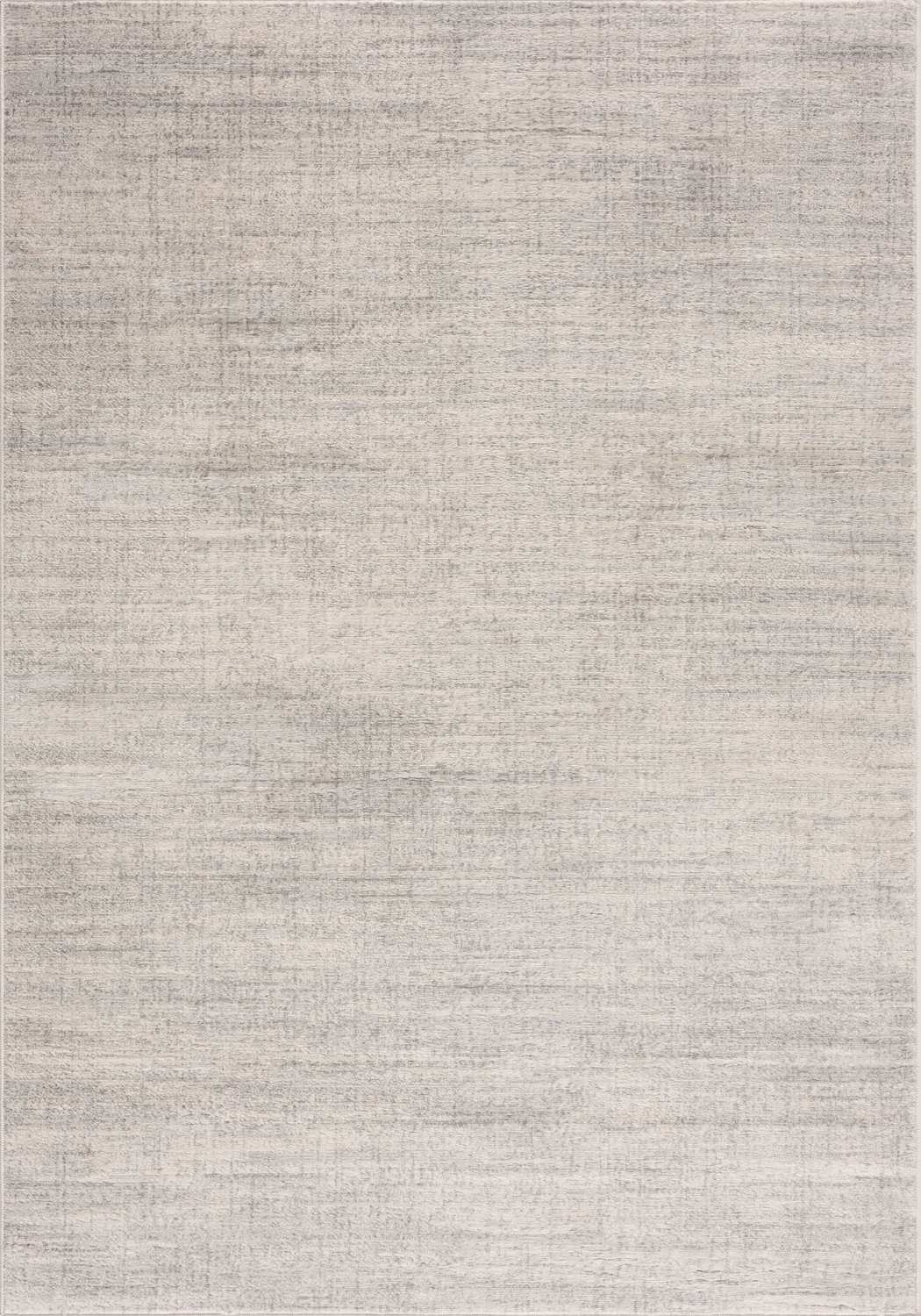
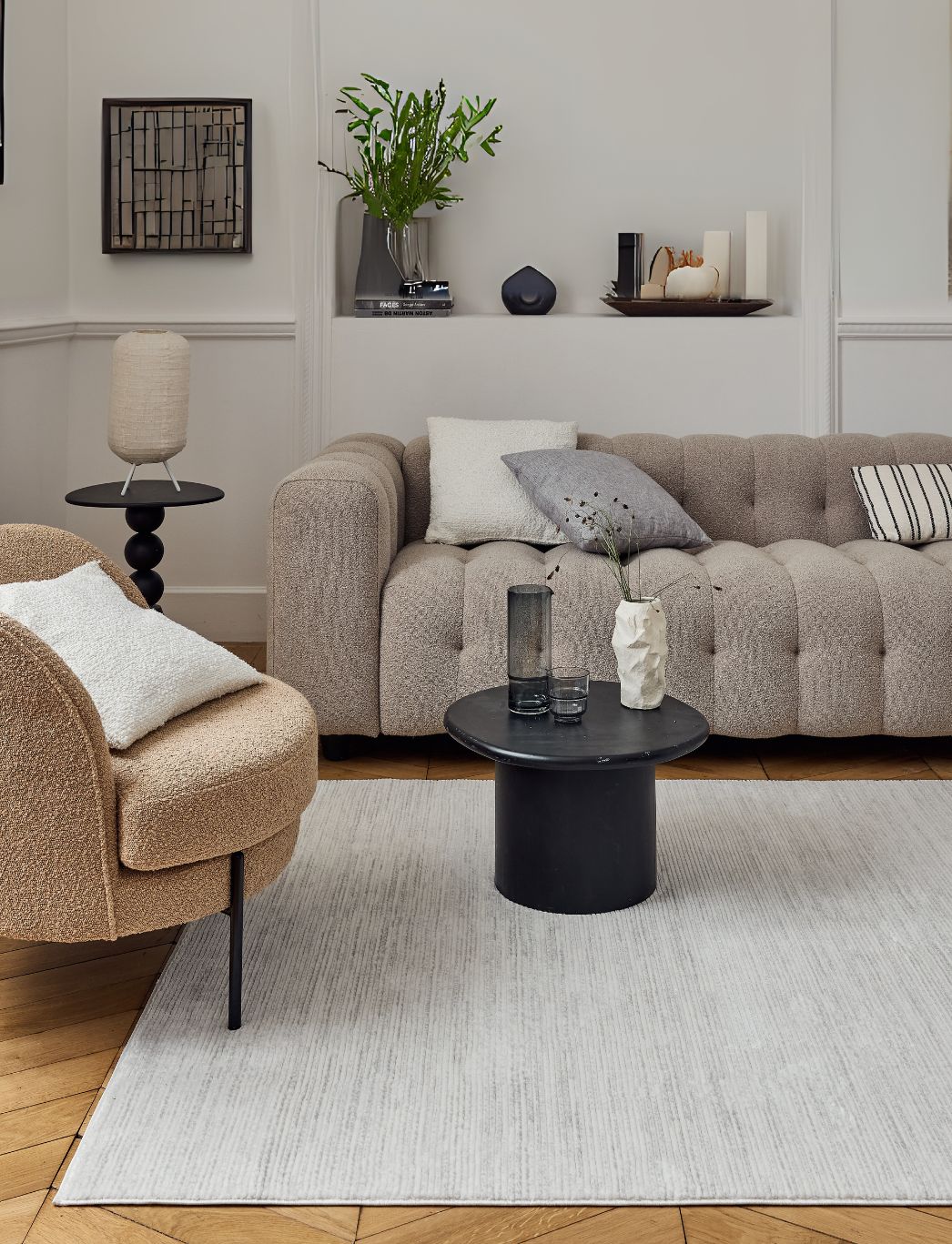
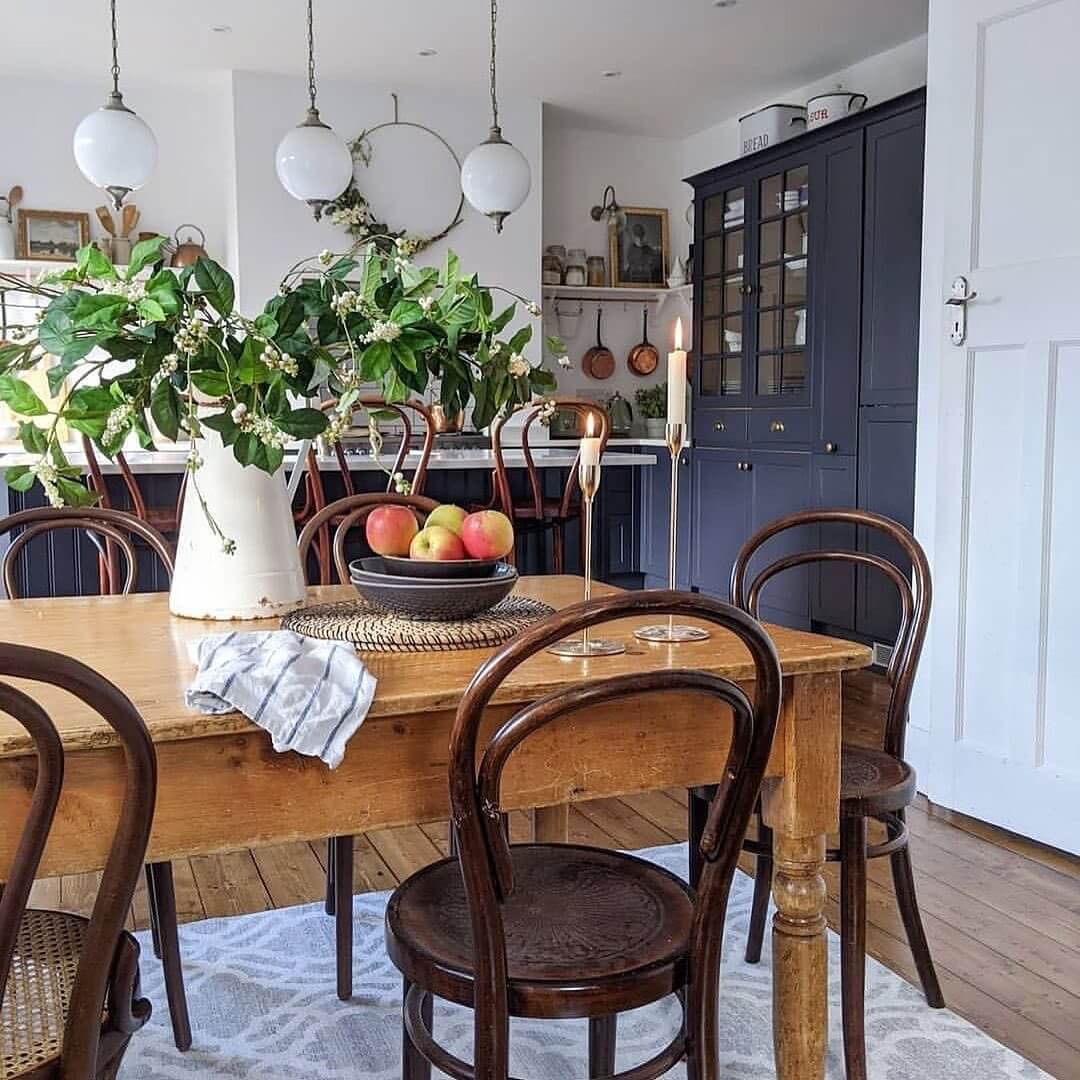
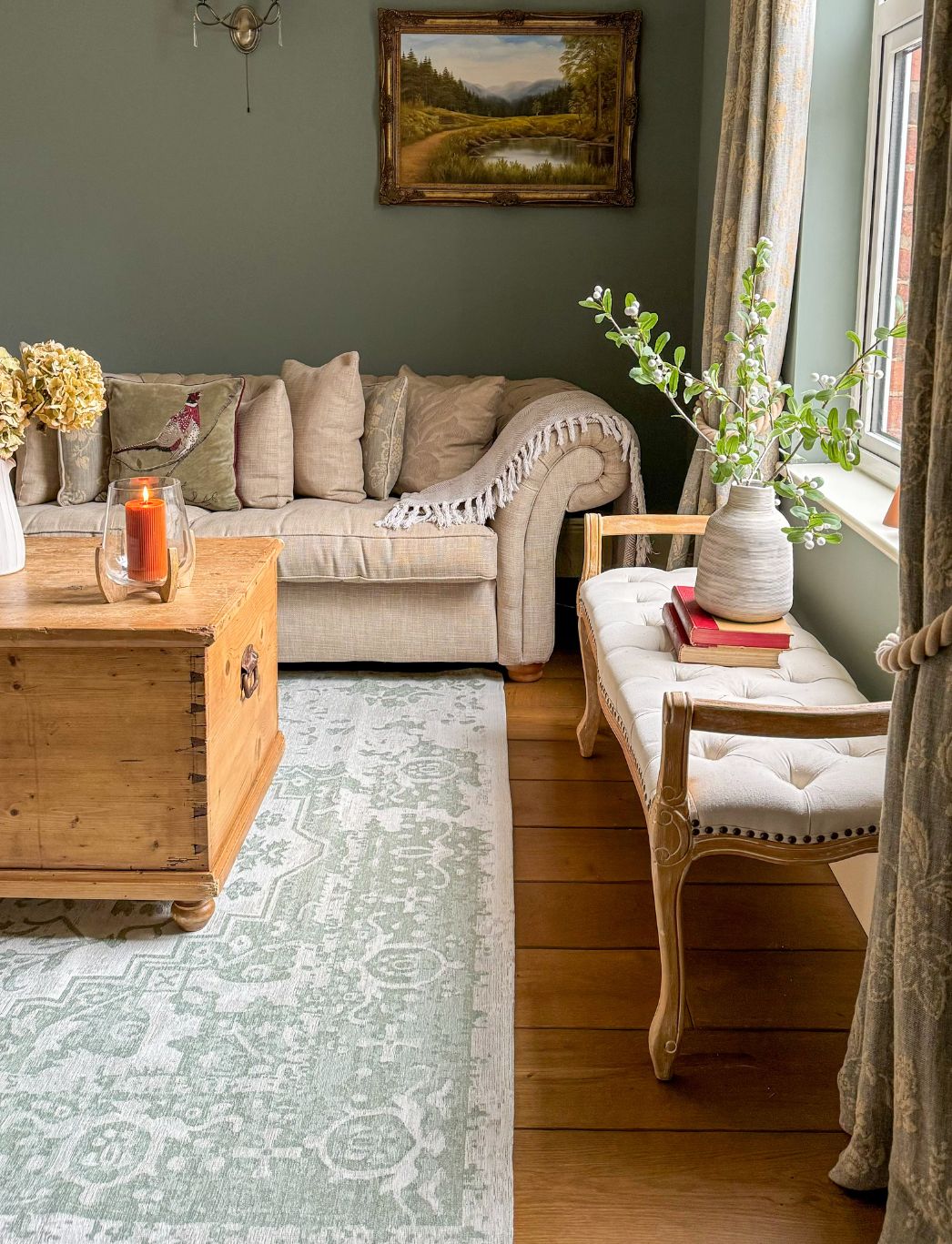
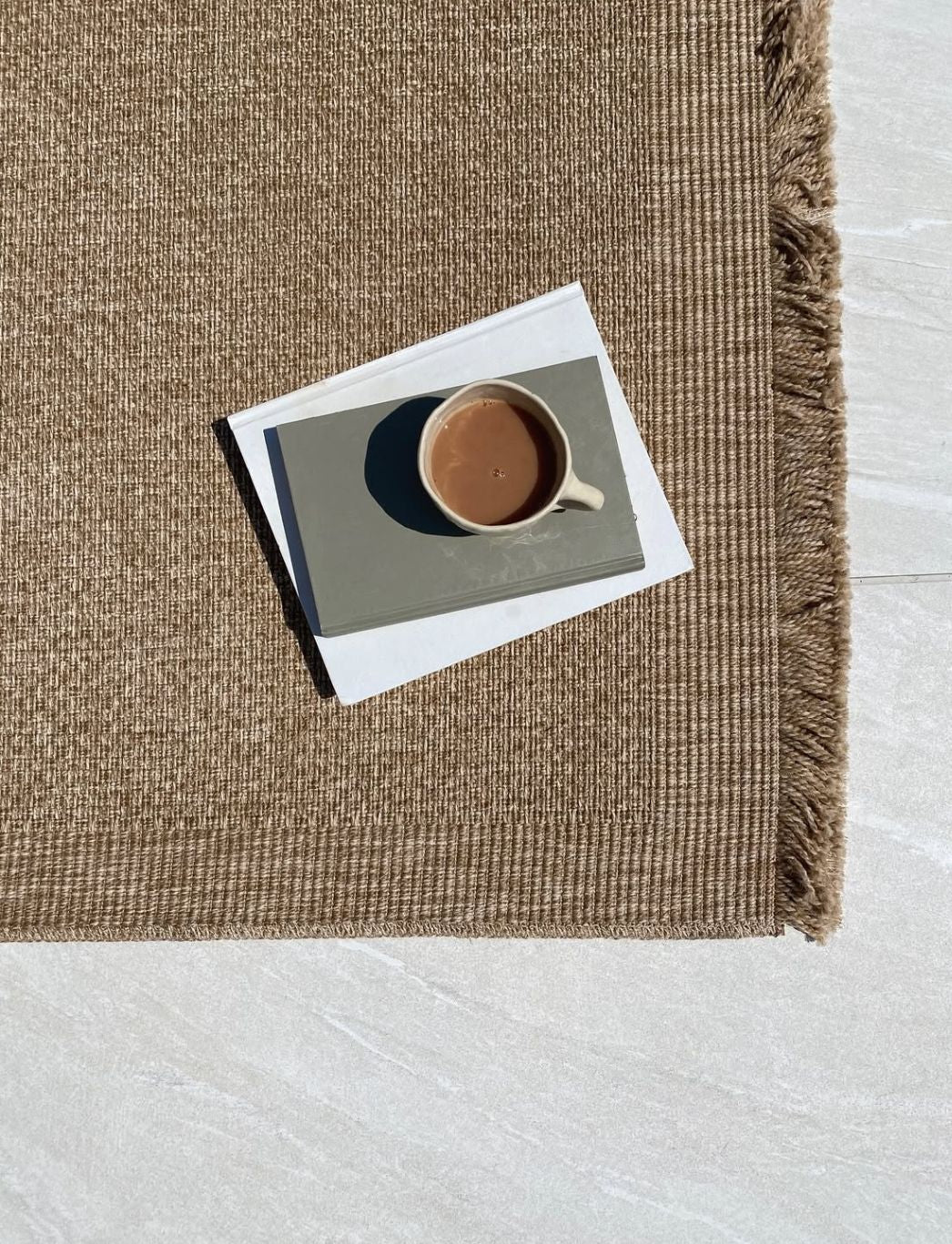

Leave a comment